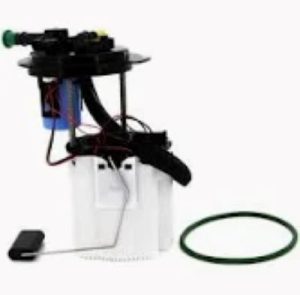Compatibility factors for fuel pumps are the ones necessary to ensure that a replacement pump operates correctly within a vehicle's fuel system. The first factor refers to fuel type: whether the system uses gasoline, diesel, or alternative fuels. Diesel fuel pumps, for instance, must be manufactured from materials that will not corrode, since the chemical composition of diesel is far from similar to that of gasoline. The reason it is important that a gasoline pump not be used in a diesel application is because diesel fuel has higher viscosity and density, for which conventional gasoline pumps are not designed.
Another important compatibility factor is the flow rate and pressure specification. Fuel pumps are designed to deliver a certain flow rate, usually measured in liters per hour (LPH). Standard pumps may provide approximately 200 LPH for naturally aspirated engines, while high-performance vehicles may need pumps capable of more than 300 LPH. A pump with a low flow capacity will definitely starve the performance of an engine and may result in potential engine damage.
Another highly important aspect of compatibility is that concerning electrical requirements. Most fuel pumps operate off a nominal 12-volt supply; however, some high-performance or modified ones can require extra amperage to function correctly. A pump requiring 15 amps applied to it should not be joined to a system pulling only 10 amps, because overheating and eventual failure would result. This entails ascertaining that the wiring and relay mechanism in the vehicle can withstand the electrical demand from the pump for smooth operation.

Other compatibility factors include the physical dimension and type of connectors. Fuel pumps are normally made in different sizes, with various mounting configurations, and a substitute pump should fit the preexisting space, while the ability to connect properly with fuel lines and the electric system should also be ascertained. Using a pump not matching the dimensions of the original could bring problems with installation and leaks. Most manufacturers provide specifications and diagrams with which the pumps should be compatible, in order to avoid issues during replacement.
Some of these aftermarket companies, like Walbro and AEM, have a line of pumps for certain applications that can really fit many different applications to keep compatibility across multiple models. These specifications are at times best checked against to avoid costly mistakes when trying to ensure the Fuel Pump operates as intended.
Therefore, taking into consideration the type of fuel, flow rate and pressure, electric needs, and physical measurement, one can be assured that the fuel pump to be selected will be suitable for the system in a vehicle. Proper compatibility enhances performance, reliability, and safety features toward the general efficiency of the fuel system.